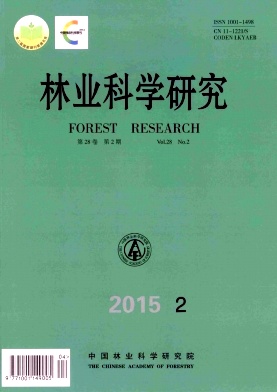|
[1]
|
《中国植物志》编辑委员会. 中国植物志(第71卷) [M]. 北京: 科学出版社, 1999:08.
|
|
[2]
|
Tseng T H, Chu C Y, Huang J M, et al. Crocetin protects against oxidative damage in rat primary hepatocytes[J]. Cancer letters, 1995, 97(1): 61-67. |
|
[3]
|
Watanabe T, Terabe S. Analysis of natural food pigments by capillary electrophoresis[J]. Journal of Chromatography A, 2000, 880(1): 311-322. |
|
[4]
|
Yamada S, Oshima H, Saito I, et al. Adoption of crocetin as an indicator compound for detection of gardenia yellow in food products (Analysis of natural coloring matters in food V)[J]. J Food Hyg Soc Jap, 1996, 37: 372-377. |
|
[5]
|
Higashino S, Sasaki Y, Giddings J C, et al. Crocetin, a Carotenoid from Gardenia jasminoides Ellis, Protects against Hypertension and Cerebral Thrombogenesis in Stroke-prone Spontaneously Hypertensive Rats[J]. Phytotherapy Research, 2014, 28(9): 1315-1319. |
|
[6]
|
Song J L, Wang R, Shi Y P, et al. Iridoids from the flowers of Gardenia jasminoides Ellis and their chemotaxonomic significance[J]. Biochemical Systematics and Ecology, 2014, 56: 267-270. |
|
[7]
|
陈 雁, 张现涛, 张雷红, 等. 栀子化学成分及药理作用研究进展[J]. 海峡药学, 2010, (12): 1-5.
|
|
[8]
|
Peng K, Yang L, Zhao S, et al. Chemical constituents from the fruit of Gardenia jasminoides and their inhibitory effects on nitric oxide production[J]. Bioorganic & medicinal chemistry letters, 2013, 23(4): 1127-1131. |
|
[9]
|
韩建萍, 陈士林, 张文生, 等. 栀子道地性的分子生态学[J]. 应用生态学报, 2006, (12): 2385-2388.
|
|
[10]
|
葛 菲, 周至明. 栀子及其近缘类群的随机扩增多态DNA分析[J]. 时珍国医国药, 2007, (08): 1917-1918.
|
|
[11]
|
易刚强, 李云耀, 崔培梧, 等. 栀子过氧化物酶、酯酶同工酶的遗传多样性分析[J]. 中南药学, 2012, (06): 428-432.
|
|
[12]
|
韩建萍, 陈士林, 张文生, 等. 栀子遗传多样性及遗传分化的RAPD分析[J]. 中国药学杂志, 2007, (23): 1774-1778.
|
|
[13]
|
Han J, Zhang W, Cao H, et al. Genetic diversity and biogeography of the traditional Chinese medicine, Gardenia jasminoides, based on AFLP markers[J]. Biochemical systematics and ecology, 2007, 35(3): 138-145. |
|
[14]
|
雷 栗, 王 益, 赵阿曼, 等. 栀子道地药材遗传关系的ISSR证据[J]. 中草药, 2009, (01): 116-120.
|
|
[15]
|
Van Rossum F, Triest L. Fine-scale genetic structure of the common Primula elatior (Primulaceae) at an early stage of population fragmentation[J]. American Journal of Botany, 2006, 93(9): 1281-1288. |
|
[16]
|
葛 颂, 洪德元. 濒危物种裂叶沙参及其近缘广布种泡沙参的遗传多样性研究[J]. 遗传学报, 1999, 26(4): 410-417.
|
|
[17]
|
Godt M J W, Walker J, Hamrick J L. Genetic diversity in the endangered lily Harperocallis flava and a close relative, Tofieldia racemosa[J]. Conservation Biology, 1997, 11(2): 361-366. |
|
[18]
|
Zhou S L, Wen J, Hong D Y. Allozyme diversity in Eleurherococcus senrieosus and E. brachypus (Araliaceae) from China and its implication for conservation[J]. SIDA Contribution to Botany, 2004, (21): 993-1007. |
|
[19]
|
郭宏波. 野生与栽培党参遗传多样性及其保存和保护策略研究[D]. 复旦大学, 2007.
|
|
[20]
|
柳新红, 李因刚, 赵 勋, 等. 白花树天然群体表型多样性研究[J]. 林业科学研究, 2011, (06): 694-700.
|
|
[21]
|
明 军, 顾万春. 紫丁香表型多样性研究[J]. 林业科学研究, 2006, (02): 199-204.
|
|
[22]
|
杨维泽, 金 航, 李晚谊, 等. 濒危植物云南黄连不同居群表型多样性研究[J]. 云南大学学报:自然科学版, 2013, (05): 719-726.
|
|
[23]
|
田胜平, 汪阳东, 陈益存, 等. 山苍子天然种群叶片和种实性状的表型多样性[J]. 生态学杂志, 2012, (07): 1665-1672.
|
|
[24]
|
王贤荣, 谢春平, 伊贤贵, 等. 不同居群野生早樱形态变异研究[J]. 植物研究, 2007, 27(6): 746-752.
|
|
[25]
|
葛 颂, 王明庥, 陈岳武. 用同工酶研究马尾松群体的遗传结构[J]. 林业科学, 1988, 24(4): 399-409.
|
|
[26]
|
井振华, 李 皓, 邵文豪, 等. 浙江柿天然群体表型多样性研究[J]. 植物研究, 2010, (03): 325-331.
|
|
[27]
|
Hamrick J L, Godt M J W, Sherman-Broyles S L. Factors influencing levels of genetic diversity in woody plant species[M]. Population genetics of forest trees. Springer Netherlands, 1992: 95-124. |
|
[28]
|
金 燕, 卢宝荣. 遗传多样性的取样策略[J]. 生物多样性, 2003, (02): 155-161.
|
|
[29]
|
Gustavsson B A. Genetic variation in horticulturally important traits of fifteen wild lingonberry Vaccinium vitisidaea L. populations[J]. Euphytica, 2001, 120(2): 173-182. |
|
[30]
|
柴春山, 芦 娟, 蔡国军, 等. 文冠果人工种群的果实表型多样性及其变异[J]. 林业科学研究, 2013, (02): 181-191.
|
|
[31]
|
方 敏, 姜卫兵. 栀子的民族植物学研究及园林应用概述[J]. 南方农业: 园林花卉版, 2010, (005): 30-34.
|
|
[32]
|
俞香顺, 周 茜. 中国栀子审美文化探析[J]. 北京林业大学学报: 社会科学版, 2010, (001): 6-12.
|
|
[33]
|
慕 华. 我国栽培作物来源的探讨[J]. 中国农业科学, 1981, 4: 86-95.
|





 DownLoad:
DownLoad: